Toberslany, Ballyquin, County Clare
I don’t think much about concrete. Probably you don’t either, but maybe this unusual opening sentence will grab your attention. Sometimes, incongruities can get you attending to aspects of the world that normally you would take for granted.
On the map of rural Clare, the little red dot marked ‘holy well’ appeared to be positioned to the left of an unpaved track. Arriving at the location, I was not hopeful. The track was a tree-lined farm lane which led nowhere obvious. If there was a well down here, it seemed likely to be abandoned or overgrown. I pictured a soggy patch in a field, or maybe the residual evidence of an old stone wellhouse, cracked by tree roots.
The first evidence that I was wrong came when a little metal gate appeared on the left. Beyond it could be seen something whose colours stood out among the greens and browns of the Irish rural scene:
Through the gate we went, my wife and I, and across the boggy field, and there it was: a sight that which, in its square, blue-and cream orderliness, seemed entirely out of keeping with the ragged, green essence of the landscape.
Wells in Ireland, as you will know if you have been following this series, vary enormously, but a good number of them follow this kind of solid concrete formula. I don’t know when this style of wellhouse was built, but I would guess it was some time after the 1960s - which is when the Catholic Church also started building things like this all over the place in a misguided attempt to be ‘modern’ and - wait for it - ‘accessible’:
Oh dear. I suppose it must have seemed like a good idea at the time. This well is a lot more vernacular than the above Dublin church, and a lot less intimidating too, but it’s still pretty much solid concrete. Did you know that there will soon be more concrete in world than biomass? Me neither, but it turns out that we get through 30 billion tons of the stuff every year. Ecologically, it’s as much of a disaster as most of the other things that the human race has done since the industrial revolution. The church is just following the crowd.
30 billion tons is the kind of number which it’s impossible to visualise. Easier to visualise for me was the difficulty of getting concrete mixers, and all the associated gear, down this tiny lane in County Clare to make this wellhouse happen. I wonder what it looked like before. The old Irish wellhouses tended to be built of stone. The difference in the feel of a stone and a concrete wellhouse is hard to describe but easy to experience. Something like this is in some way Machine-like. It doesn’t fit into the landscape. It’s too clean and heavy and square.
Still, I’d rather see this than an abandoned well. And we can see, on entering the concrete enclosure, that the place is still visited and tended:
As you can see from the above picture, the water flows out of the hill and down a channel, which flows through the enclosure and then out again into the field. Historically, it is said that the stream was divided into sections, with each offering a cure for a different medical problem.
Under the array of statuary, the water still runs clear:
The alternative local name for Toberslany is ‘St Ceily’s Holy Well.’ Who is this St Ceily? Nobody knows. There is no saint of that name. Some theories suggest that the well thus has a ‘pagan origin’, which is possible, I suppose, but seems unlikely. Why give a well a saint’s name at all, if the saint is not real? It seems more likely that ‘St Ceily’ is a corruption of St Cecilia, a third century Roman martyr who is now the patron saint of music.
St Cecilia would, I suppose, have been no stranger to concrete, which the Romans used by the bucketload. The world’s biggest unsupported concrete roof is not in some modernist church or stadium, but in the Pantheon, the Roman pagan temple which became a church, and still stands in the centre of Rome. Concrete can last a very long time. So can the Church, it turns out. Perhaps this well will do the same.


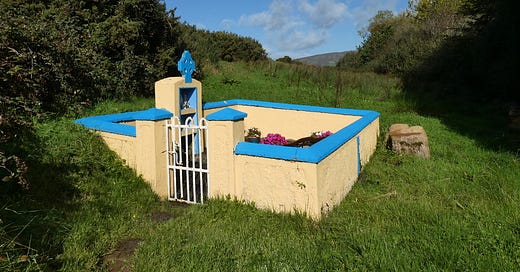



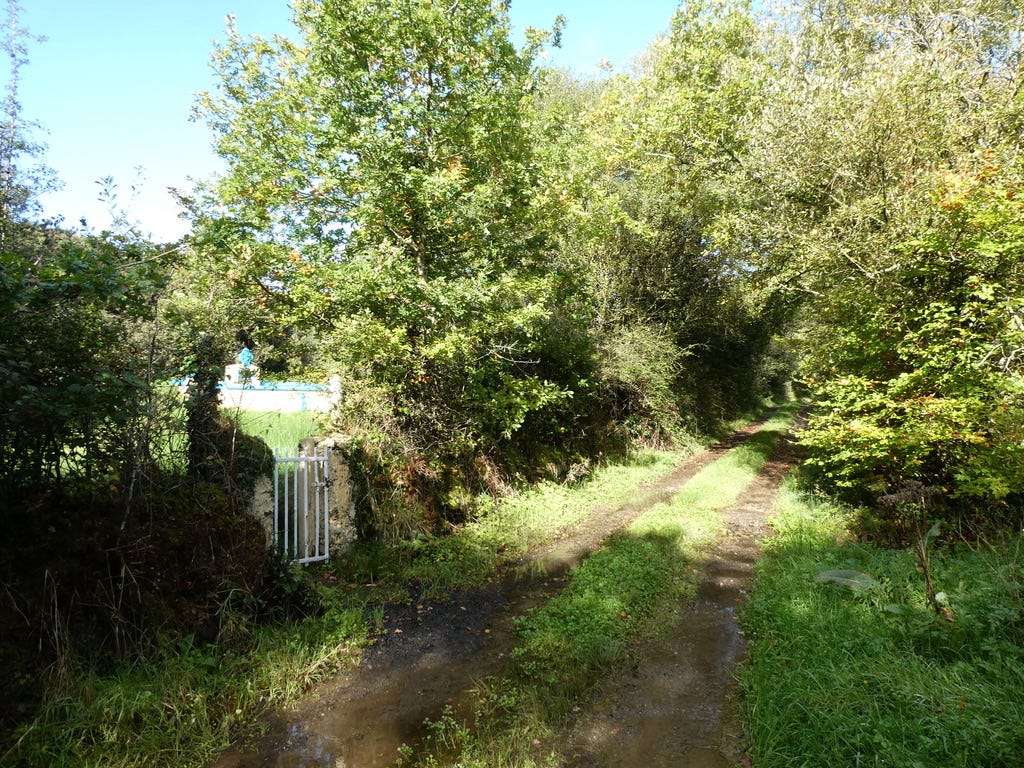
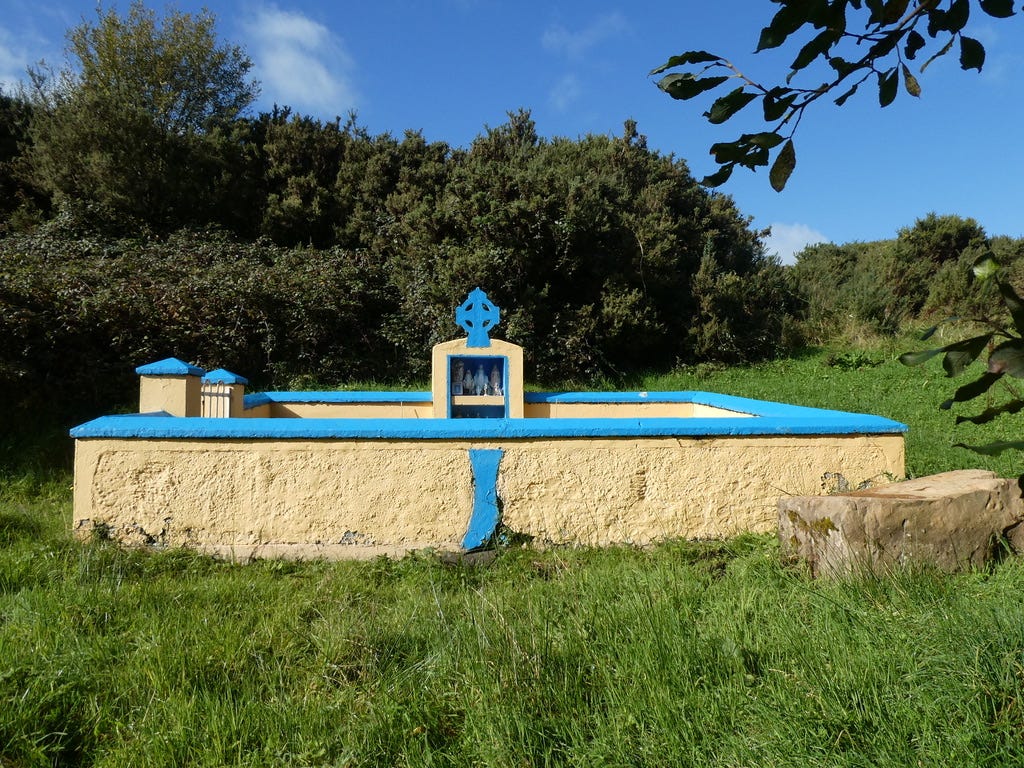
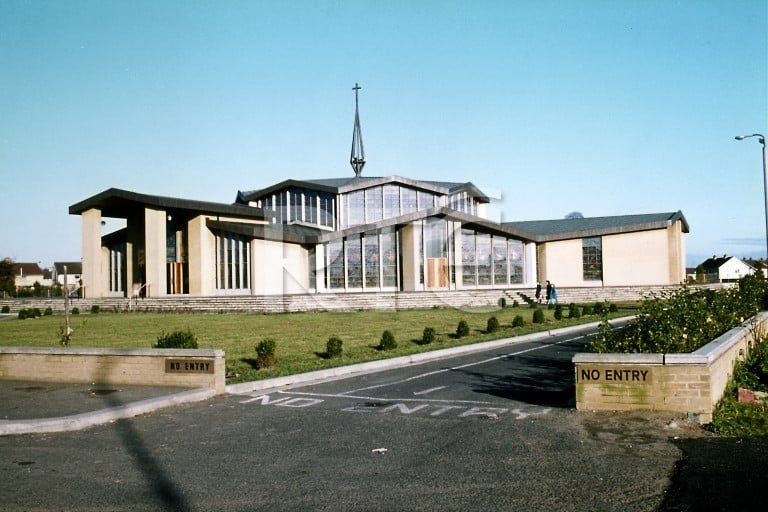
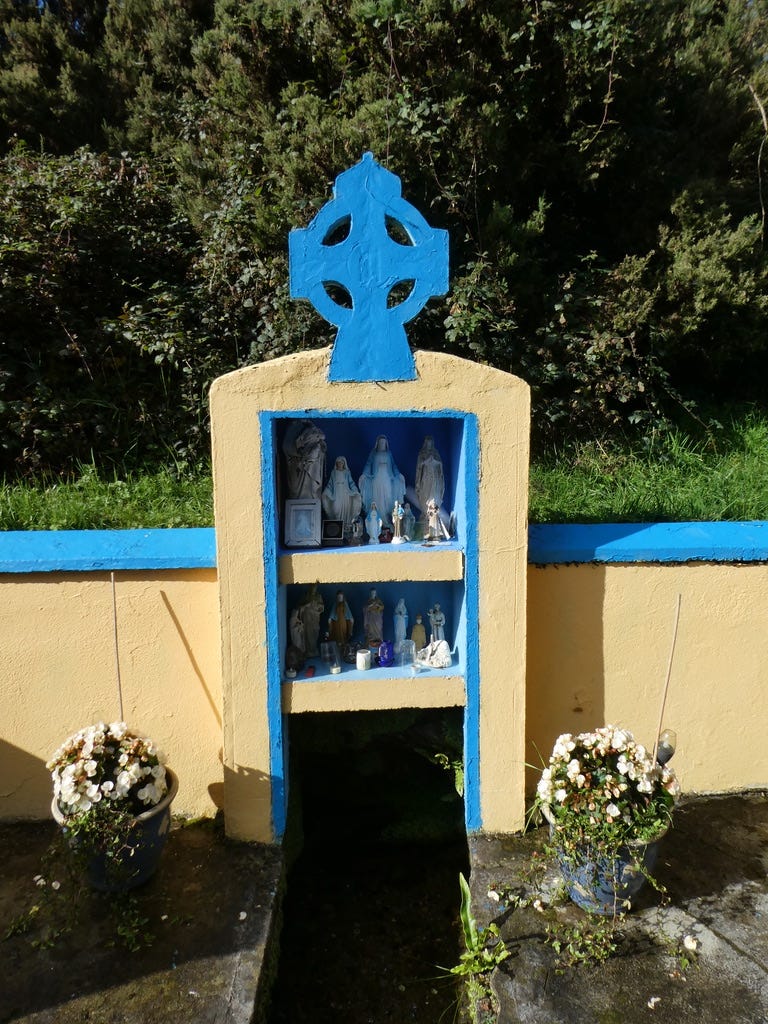
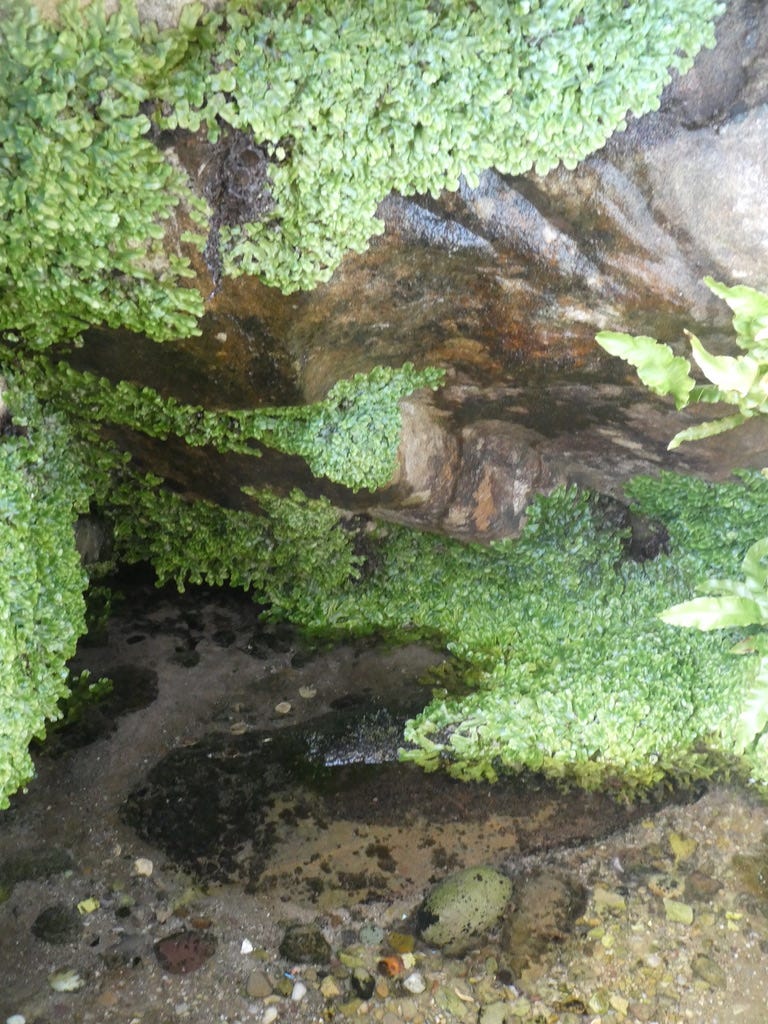

Thanks, Paul. May I suggest that it's important here to distinguish between the old lime mortars and modern concrete, which uses Portland Cement. Books have been written on the beauty of traditional lime mortars, and on the unforgiving rigidity of concrete. The former allows for human-scale building; the latter for poured-concrete skyscrapers and churches.
I have just returned from Mull and Iona Monastery and thought of you when I visited St Ninian’s Holy Well, it’s beautifully looked after by the Mothers with a little drinking cup, the water is pure and lovely.